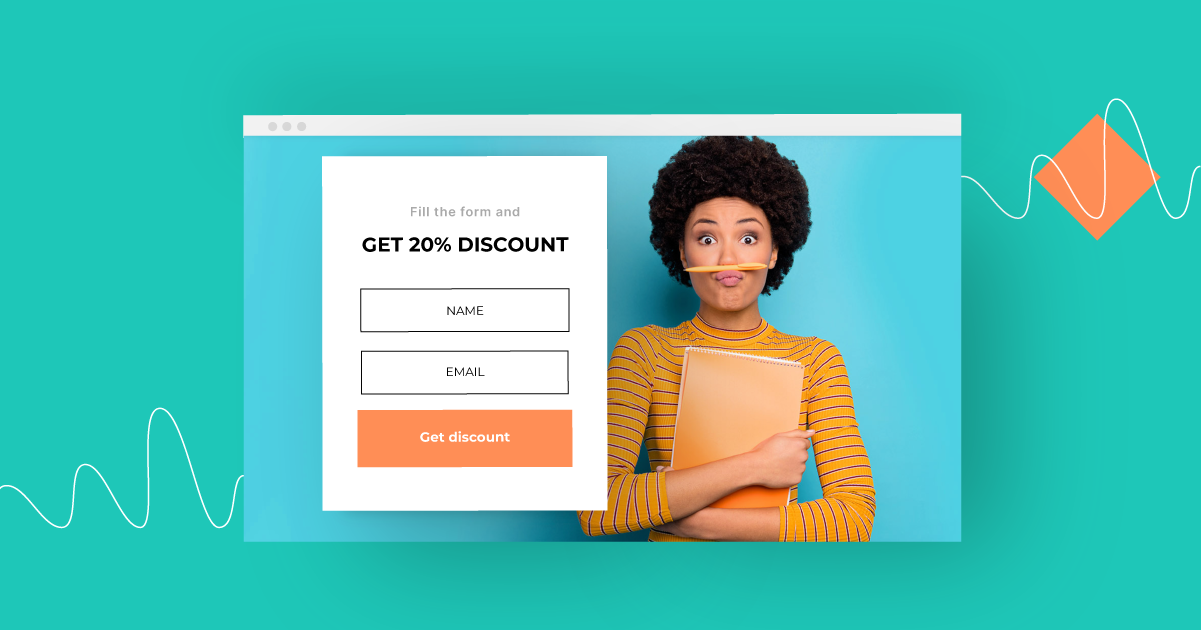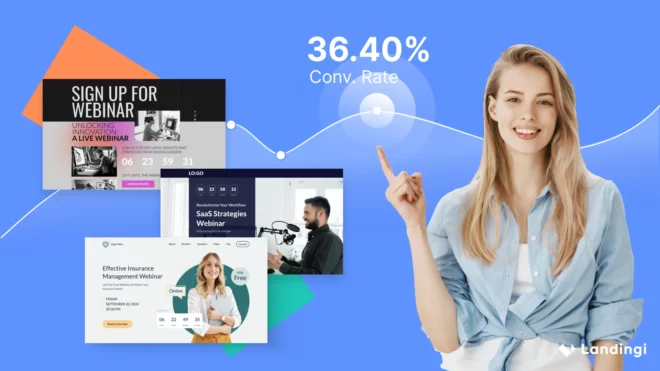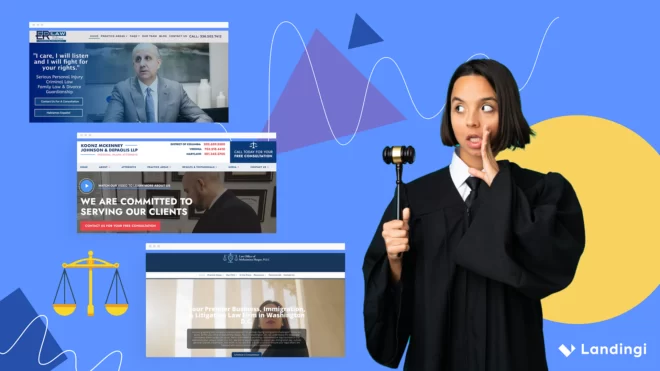You may hear that nobody reads emails anymore, nobody cares about them, and that messengers or chat apps will sooner or later replace email inboxes. While on the other hand, you might receive thousands of promotional emails day after day. What is the truth? Why do brands still want your digital address so badly?
This is probably why: in 2020, there were approximately 4 billion email users worldwide and the number is set to grow to 4.5 billion in 2024. Sounds impressive, doesn’t it?
As a result of constant growth, companies are coming up with new methods to boost their mailing lists. If you’re unsatisfied with the number of leads that your business has, it’s possible for you to increase them! This article explains one way of doing so – using a squeeze page.
What is a squeeze page, what elements does one consist of, and how does it differ from a landing page? You’re in exactly the right place to find out the answers to all of these questions! More than that, you will learn what to do once your squeeze page has been set up, along with some best practices and examples.
Let’s start with the basics!
What is a squeeze page, then?
A squeeze page is a type of page that marketers use to collect emails from visitors. They encourage customers to leave their details by offering them something special (e.g., a discount, a freebie, a piece of content), granting limited access, or providing more information about a product or service. Squeeze pages rely on psychological tactics to persuade users into submitting their information.
Business benefits of squeeze pages
It’s an efficient way to push customers further down the sales funnel. Even if they don’t decide to purchase right away, they may be more willing to buy in the future.
Most companies add the gathered email addresses to their mailing list and then use marketing automation to send targeted emails in order to convert potential customers into buyers.
By obtaining your visitors’ email addresses, you will have all the required information to speak directly to them and begin building a customer-brand relationship.
How to get started?
Before you start creating a squeeze page, you need to find out the answer to one fundamental question: which is my most valuable digital asset for customers?
Remember that you are not the only one who wants to get this information from users, so you need to make an effort. Offer something that will encourage customers to leave their emails, such as an ebook, event invitation, or access to a product that is not available on regular sale. Think of something that will make them want to willingly leave the email address before they leave the page.
What will the responder do in return?
- share more information about themselves,
- become more interested in your offer,
- purchase a product or service,
- best case scenario – become a loyal customer.
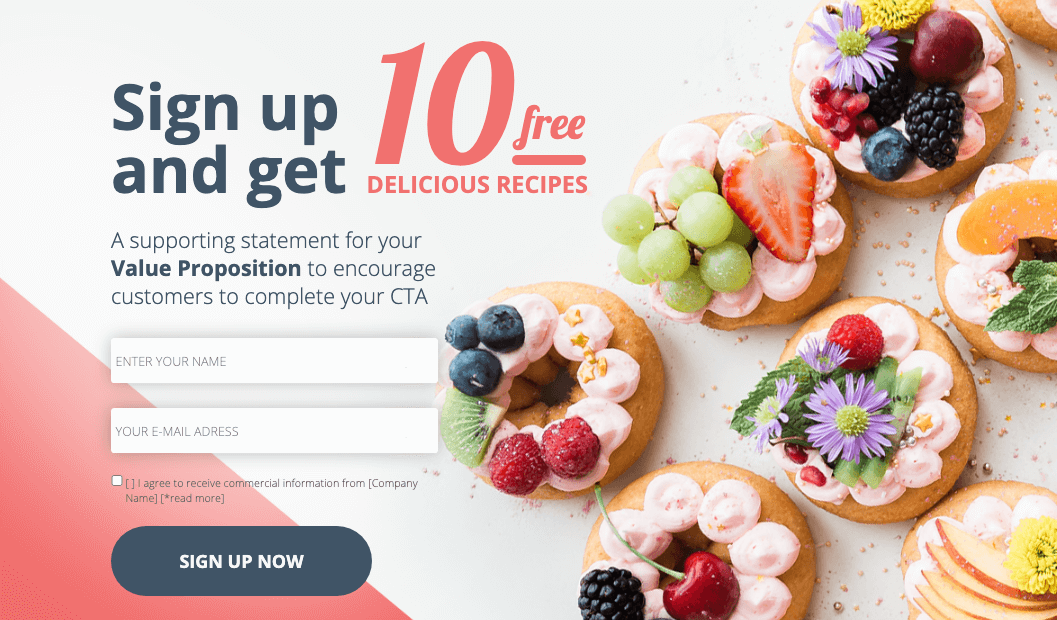
Squeeze page vs landing page differences
Many marketers admit that a squeeze page is just a landing page that is focused on collecting emails. There is truth in this; a squeeze page is a type of landing page, as are thank you pages or viral pages. However, some people do not distinguish between them and use the terms interchangeably. This is a bit of a mistake because squeeze pages and landing pages are different in some ways. So how to tell them apart?
#Goal:
- A squeeze page is focused on obtaining two main pieces of information – email address and name – so its form fields are limited.
- A landing page aims to achieve a single conversion goal, such as registering for a webinar or using a free trial for a SaaS product. As such, the form fields may require more specific information, e.g., credit card details.
#Content:
- Unlike a landing page, a squeeze page is short and to-the-point, clearly explaining the purpose.
- A landing page can vary in length and might include much more detailed product information.
#Elements:
- Squeeze page elements are kept to the minimum to stop visitors from leaving the site.
- A landing page often involves many more elements – lots of graphics, social proof, testimonials, lists of benefits, etc.
#Point of the buyer journey:
- A squeeze page is typically used at the beginning of the buyer journey (awareness stage), whereas a landing page can be used at different stages.
Summarizing the above points: every squeeze page is a landing page, but not every landing page is a squeeze page.
It may sound somewhat like squeeze pages and landing pages are…

Let us unwind it a bit and maybe put them back on friendly terms.
Both squeeze pages and landing pages work perfectly well as goal-oriented standalone pages designed to achieve a particular action from visitors. Nevertheless, a squeeze page doesn’t always have to be a separate page. It can be integrated into a landing page. How? These are two most common forms:
Pop-up squeeze page: floats on top of the main content, grabbing your visitors’ attention and persuading them to leave their information. They’re usually quite annoying and intrusive, so they have to be made very carefully to not have the opposite to the desired effect of gaining leads.
Splash squeeze page: custom pages that users are sent to once they have visited the homepage. However, this form of squeeze page is also slightly risky because visitors might never come back to the main landing page. So if you choose this option, be sure that visitors have clear instructions about how to return to the homepage.
#Good to know: You can use these forms of squeeze pages to integrate them with your existing WordPress landing page.
As you can see, a squeeze page has more possibilities than just being a single page. A squeeze vs. landing page could become a landing page with a squeeze page, and the two working as partners can be a useful online marketing tool.
Squeeze page: best practices & examples
How to create a squeeze page?
Here’s where the bumpy ride begins. You now probably know a thing or two about squeeze pages, but putting all the theory into practice is still quite a challenge.
The options you have at your disposal are:
- Hiring a designer who makes it for you (it’s usually a choice on the pricey side, but for sure the advantage is the expert’s know-how).
- Design a squeeze page by yourself (if you’re not entirely familiar with this topic, it may cost you a lot of unnecessary stress unless you use a landing page builder to make the process as easy and straightforward as possible).
And there are quite a few benefits of going for the latter option.
First, instead of relying on someone else’s design skills, you can pick one of landing page templates to build a squeeze page quicker and better than ever before. Furthermore, you will be able to see numerous catchy squeeze page examples, identify those you like most, and get inspired by them. Last but not least, it’s simply often quicker and less expensive to do it yourself than involving a dedicated team.

Which basic elements should your squeeze page contain?
The general rule for designing a squeeze page is to keep it minimalistic. Content should be simple, oriented for conversion, and without any distractions. At a glance, it should look like a simple landing page (though not exactly the same, as will be discussed below).
Squeeze pages are designed to convince visitors to leave their email addresses, usually for further lead nurturing. That’s the goal you should always keep in mind.
Checklist for your squeeze page design
An engaging and relevant headline to attract visitors’ attention.
A visual representation of the product/service to demonstrate to visitors what they can gain by leaving their email addresses. Try to visualize the benefits because they can have the most significant impact on influencing customers’ decisions.
A brief copy describing the service or offer’s features. It should be focused on the most relevant aspects, especially the benefits. Outcome over features too!
A form with two fields – email address and name are sufficient in the case of a squeeze page (remember about its primary goal).
A CTA button on a contrasting background, explaining the action you want your users to take.
#Good to know: Pick a landing page creator that allows you to easily duplicate squeeze pages so you can test and compare their performance.
You may also want to look at different squeeze page examples to evaluate whether you would leave your email address on a particular page or not. If so – what made you think that? If not – why? Try to view your design through your visitors’ eyes.
If you’re looking for some “exercise material”, you may want to take a look at some landing page examples to find a style that suits you best.
What’s next?
Once you know what a squeeze page is, what its main elements are, and how a squeeze page compares to a landing page, it’s time to understand what to do after you’ve set one up.
Step 1: Promote
The first step is to direct traffic to your squeeze page. You won’t be able to gain a sufficient number of leads and email addresses without executing a promotional strategy.
There are many options for promoting a squeeze page!
You can use, for example:
- social media platforms (profiles and groups)
- promotion on your blog or website
- paid adverts
- influencer marketing
Remember about message match. Make sure to prepare promotional materials that are in line with your squeeze page design, regardless of the platform on which you’re going to promote them. This way, you won’t confuse potential visitors and they will be able to quickly connect the dots.
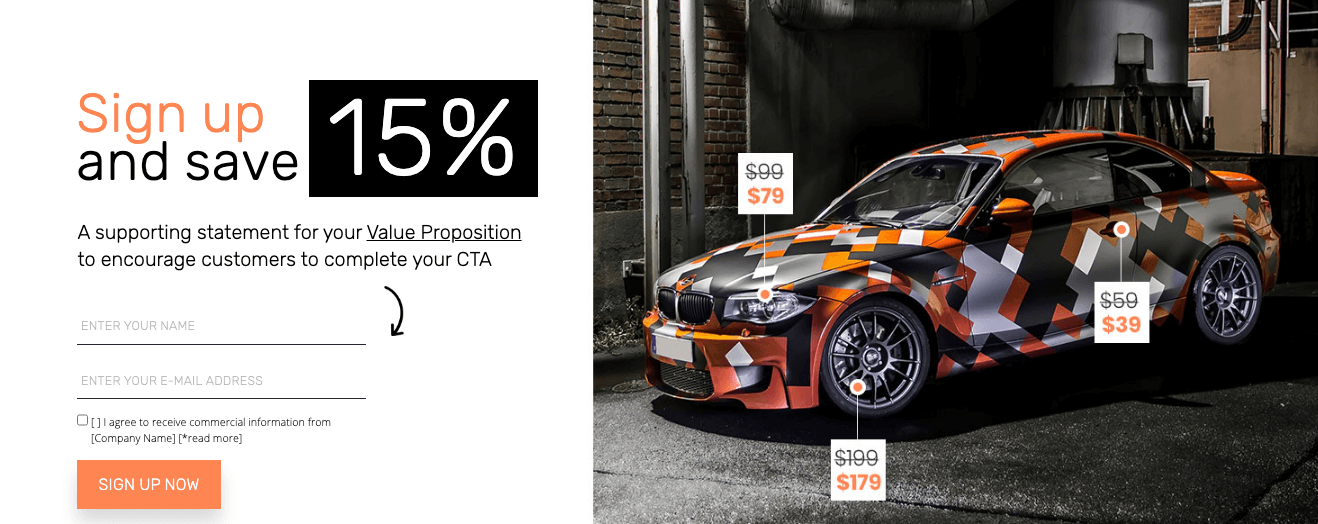
Step 2: Process
Once you start promoting your squeeze page, you will hopefully notice a rapid growth in the number of visitors’ email addresses obtained. As soon as you’ve got this information, you have many options to reach your customers.
You may want to, for example, send them an immediate email to remind them about your brand and the reason(s) they signed up to the mailing list. You can use these email addresses for retargeting on social media, to serve the recipients customized ads, and move them further down the sales funnel. You can send them informative materials or try your luck with up-selling.
And since you’re six times more likely to generate a click-through from an email marketing campaign than a tweet, you may want to make the most of this.
Creating a squeeze page and leveraging the benefits of email marketing simply makes sense. Remember to have a plan for what you are going to do with the leads you get after launching a squeeze page in order to make the most of its power. Plan and process the whole email sequence to turn these leads into deals.
Step 3: Probe
We’re likely to be repeating ourselves here, but we’re going to say it anyway.
Analyze, optimize, test – all over again. Without checking your stats and analyzing the performance of each and every element of your squeeze page, achieving satisfying results may take far longer than it should, and that’s probably not what you want – especially if your campaign is rather time-bound.
Over to you
It may seem as though emails are getting old, and in a few years nobody will be using them. As you can see, the truth is rather different. Emails are still among the most effective online marketing channels, and a squeeze page makes it even easier to build a long list of digital addresses.
All you have to do is get to know your target customers and find out how you can encourage them to leave their details. Once you accomplish this, you will be on the right track to obtaining your visitors’ email addresses.
Now that you have a complete understanding of squeeze pages, what the best practices are, and how they differ from landing pages, you can start to create your own. And one that will generate tons of new leads and allow you to reach multiple new customers! Good luck!
